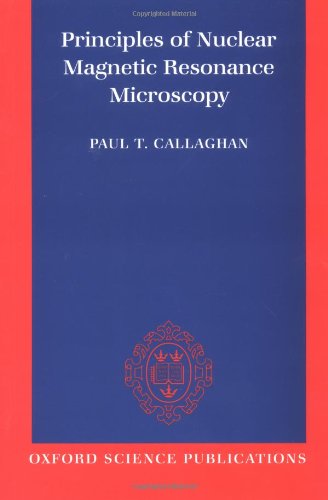Principles of Nuclear Magnetic Resonance Microscopy pdf free
Par brown nicole le lundi, juillet 11 2016, 18:21 - Lien permanent
Principles of Nuclear Magnetic Resonance Microscopy. Paul Callaghan

Principles.of.Nuclear.Magnetic.Resonance.Microscopy.pdf
ISBN: 0198539444,9780198539445 | 512 pages | 13 Mb

Principles of Nuclear Magnetic Resonance Microscopy Paul Callaghan
Publisher: Oxford University Press, USA
NMR phenomena instead of nuclei. The basic principles are otherwise similar. Principles of Nuclear Magnetic Resonance in One and Two Dimensions, Principles of Nuclear Magnetic Resonance Microscopy - Paul. Magnetic resonance microscopy: recent advances and applications. Texas A&M University's Department of Biochemistry and Biophysics received a Nuclear Magnetic Resonance spectrometer that will expand macromolecular research. Google book Principles of Magnetic Resonance. An NMR spectrometer works similarly to an MRI, but on a microscopic level. For instance, in 29Si NMR spectra of Au-C sample (Figure 2) four resonance lines at −96, −102, −108.3 and −113.6 ppm were identified, which correspond to Si(3Al), Si(2Al), Si(1Al) and Si(0Al) configurations, respectively [27]. �An MRI places the whole organism in the magnetic field. Many have taken an X-ray, CT scan or MRI at a hospital to diagnose a broken leg, but the same principle can be used to get a close-up view of individual molecules. The resulting response to the perturbing magnetic field is the phenomenon that is exploited in NMR spectroscopy and magnetic resonance imaging, which use very powerful applied magnetic fields in order to achieve high resolution spectra, details of which are described by the chemical shift and the Zeeman effect. MRI is based on the principles of nuclear magnetic resonance (NMR), which is a spectroscopic technique used to obtain microscopic chemical and physical data about molecules.